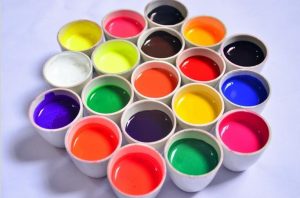Pulp color mixing essentials and techniques
The following text will mainly say hedge color (complementary color) color mixing essentials!
When mixing colors, if the chromaticity is different, you should remove the unwanted color, then when applying the three primary colors, you must apply the hedge color.

What is hedonic color? It is to remove the unwanted color and make the target color more colorful. Hedge color is divided into monochrome hedge and color hedge.
First, single-color hedging (main color hedging)
For example: purple and yellow, blue and orange, green and red, (refer to the color table 180 degrees straight line color for hedge color)
Second, color change hedge.
Mainly a primary color plus a secondary color will produce secondary colors, this method can be removed from the miscellaneous colors. The difference between monochrome hedging and compound color hedging: orange and yellow if only pure purple to hedge color is not enough, because orange and yellow is a compound color, must use blue and purple to hedge color, if the use of monochrome hedging, can only be neutralized by a color, and the rest of the color of the target color will also have an impact. If the hedge, the color appears uneven, the main reason is: hedge color plus more, and the color deepening.
When we learn to drive, the coach will let us first practice inverted library, and inverted library in addition to see the point of inverted library, we must master is to fine-tune the direction, driving the process of slowly correcting the direction, and ultimately back into the library. And we adjust the color is also fine-tuning, usually we do not know how to adjust the color of the people, by feel a few colors to join the tune, and adjust the wrong color do not know how to correct, haphazardly add color, and ultimately the color deviation of more and more far away from the pour and then have to re-try the color, which is why the oil paste with 5 shades of color a lot of people can not adjust well, has always been a plausible state of understanding, will only be adjusted to some simple light color, color mixing less color. The following Tianzhu blue we come to speak, fine-tuning color method, I hope to be useful to you.

Whether it is an oil paste or leather color paste toning key as follows:
1, when the blue was added more blue?
Can be used (yellow + red) with === === orange yellow
Orange, a small amount added to the color paste, will be blue neutralization off some.
2, when the color is dark?
Add a little white to make the color white.
3, when the yellow added more yellowish?
You can use (blue + red) with === fuchsia
Fuchsia, a small amount added to the color paste, will be neutralized by some yellow
4, when the red add more reddish?
Can use (blue + yellow) == green

Will be green, a small amount of color paste added to the tune, will be red and some of the neutralization.
The above Tianzhu blue, why have been emphasizing a small amount of accession, because the complementary colors overly added will only make the color bias gray, so what we say is fine-tuning. We usually take a look at the color table, red, yellow, black, white and blue five-color ratio to each other, the first tuning out the general direction of the similar color, and then fine-tuning, you can adjust some more accurate color.